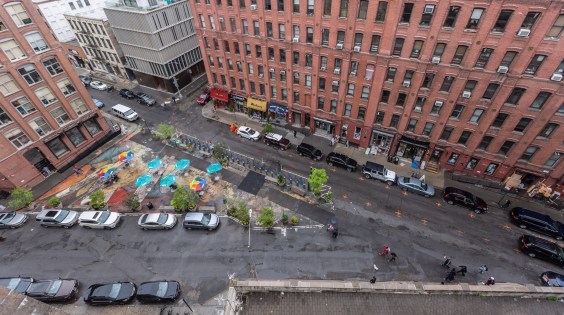Members of Congress remain intensely focused on health care this fall, but as the unemployment rate hits double digits in more states, their No. 2 priority is best summed up in three words: Jobs, jobs, jobs.
House Democrats held a job-creation powwow yesterday
that gave transportation committee chairman Jim Oberstar (D-MN) an
opening to press yet again for speedy enactment of his long-term infrastructure bill as a means to boost hiring. And transit advocates lent their voice to that call today, releasing a report [PDF] on the green jobs generated by investment in rail and buses.
Today's
report, released by the American Public Transportation Association
(APTA) offers a definitive completion of the Washington idiom that
estimates how many jobs would be created by $1 billion of federal
spending. Lawmakers in both parties have used
several different versions of that idiom for highway spending -- "$1
billion for roads would create ____ jobs" -- but the Federal Highway
Administration's official number was 30,000 in 2007 dollars.
The
current mixture of federal aid to transit also generates 30,000 jobs
per $1 billion spent, according to APTA's report, produced by Cambridge
Systematics and the Economic Development Research Group. But that total
results from the 69-31 federal split between transit capital expenses
(i.e. new equipment and tracks) and transit operating expenses (i.e.
hiring folks to run the networks).
Washington is currently
barred from helping with operating costs for transit agencies in areas
where the population exceeds 200,000, a rule that some in Congress are hoping to overturn.
What
would the job-creation mix look like if the federal government gave
extra aid to transit operating? Check out the chart below:
 (Chart: APTA)
(Chart: APTA)
In other words, the more fed
eral aid freed up for transit operating
costs, the stronger the job-creation potential. And that's just one of
the economic upsides magnified by a greater emphasis on operating aid;
APTA's report found that $1 billion for transit operating generates
$1.8 billion in take-home employee income, which in turn produces more
tax revenue for the government.
The Highway Administration, by contrast, found that $1 billion in road spending generated employee income that ranged from $1.06 billion to $1.15 billion.
Given
those numbers, one might think Congress would relax its restrictions on
transit operating aid. And lawmakers have done something -- but it's limited to 10 percent of money distributed by the stimulus law.




